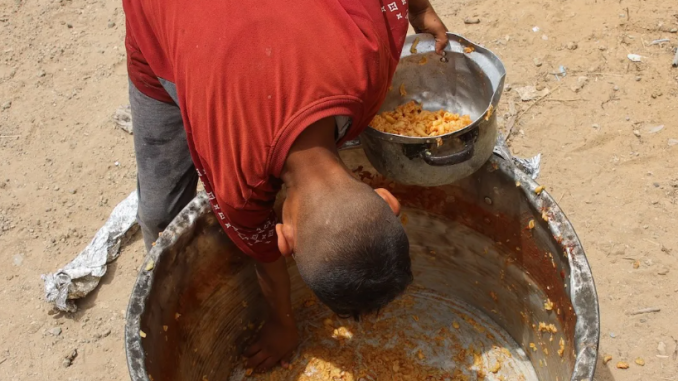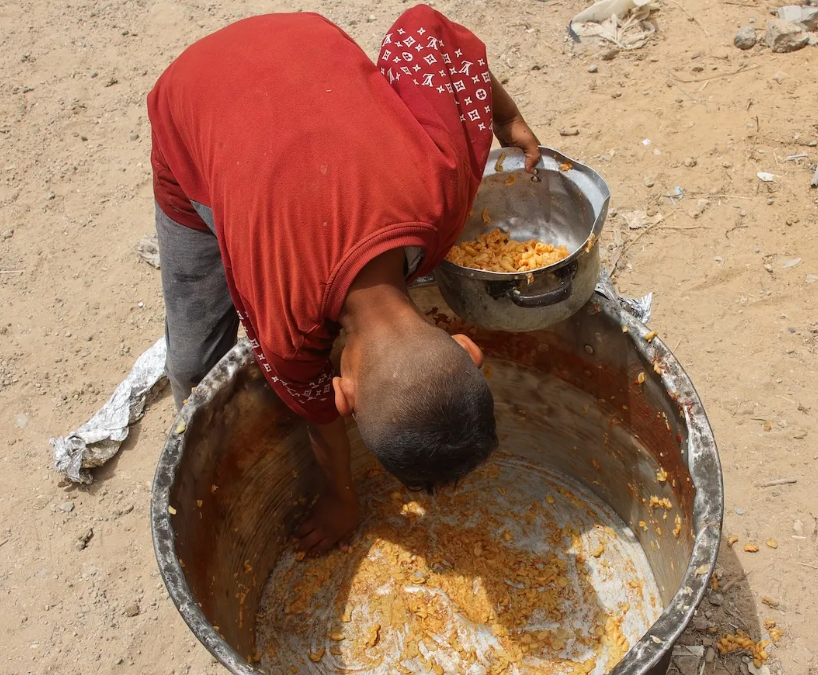
The Israeli government has announced plans to make civilians in the Strip accept further displacement as a condition of receiving food—and eventually to push them out of Palestine altogether.

On May 12 the IPC, the global authority on food security, issued a dire warning. “The Gaza Strip is still confronted with a critical risk of famine,” it wrote. “Goods indispensable for people’s survival are either depleted or expected to run out in the coming weeks. The entire population is facing high levels of acute food insecurity.” One in five people in Gaza, the group reported, now faces starvation.
Over the past nineteen months of war, the Israeli military has destroyed the civilian infrastructure—agricultural fields, water installations, medical facilities, power lines—needed to sustain life in Gaza. The devastation has intensified the preexisting crisis created by Israel’s nearly two-decade closure of the coastal enclave, which blocked access to educational opportunities, separated families, and short-circuited economic activity. Now the Israeli military’s campaign has left Gaza’s two million-plus residents, nearly half of whom are children, unable to grow crops, process food, or pump clean water. Already dependent on humanitarian aid, they have become still more so—even as Israeli authorities have allowed life-saving supplies into the Strip at only a fraction of the volume the population requires.
During the last cease-fire, which went into effect on January 19, those authorities let in significantly more humanitarian and commercial goods. But on March 2, as the cease-fire deal faltered, the government blocked all supplies from entering. The ensuing shutdown has been unprecedented: at no point since Israel built a fence around Gaza and created designated “crossings” in the 1990s has the government closed off the territory to all goods for this long. The results have been devastating. Even Donald Trump acknowledged last week that people in Gaza are “starving,” although he also said that Hamas had diverted aid and was therefore to blame. (The UN rejects this charge.)
As pressure mounted to open the crossings, even from within the Israeli military, the government responded by giving civilians in Gaza a stark choice: leave your home or risk starvation. On May 5 Israel’s security cabinet approved a plan to bypass humanitarian aid mechanisms used by the United Nations and experienced international humanitarian organizations. Such groups employ hundreds of distribution points to meet people where they are, minimizing displacement and the dangers of traveling through active combat areas and ensuring that aid remains accessible to people with disabilities and other vulnerable groups. Instead the government says it will create centralized distribution centers in policed areas, mostly in southern Gaza, to which the Israeli military has sought to move people. On Wednesday the Gaza Humanitarian Foundation, a new, US-backed group led by an American military veteran and social entrepreneur, said that it had received approval from Israel to begin distributing aid this month in parts of the Strip patrolled by the Israeli military.
The UN and veteran aid groups have rejected the Israeli plan, calling it a dangerous “pressure tactic” that would result in “driving civilians into militarized zones.” Requiring people to leave their places of shelter in order to get food would exacerbate the forced displacement that has been a hallmark of Israeli military operations in Gaza, affecting 90 percent of its residents. Since the start of the war, the Israeli government has obstructed aid missions in the areas that it has ordered civilians to leave; the new proposal would allow it to prevent aid distribution altogether in parts of Gaza it wants to clear of Palestinians.
Sari Bashi
Sari Bashi is an Israeli human rights lawyer.
